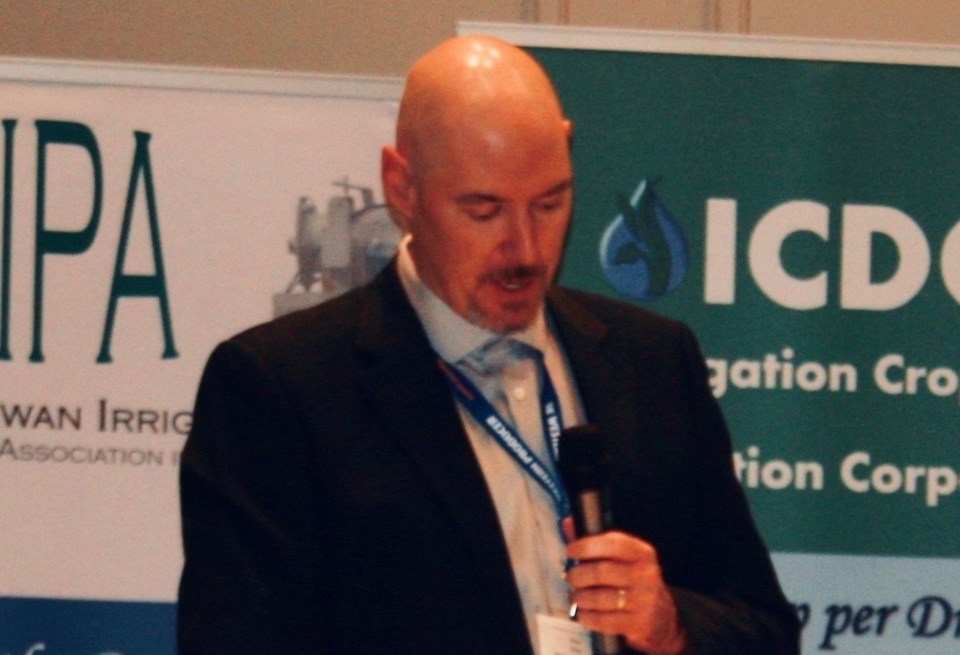Irrigation is important to the 10-year Saskatchewan Growth Plan according to Dianna Emperingham of the Ministry of Agriculture.
The growth plan targets 45 million metric tonnes of crop production by 2030 compared to 37.4 million metric tonnes in 2019 and the record 39.1 million in 2013.
She described the goal as ambitious to the annual Saskatchewan Irrigation Projects Association conference in Moose Jaw.
The irrigation part of the plan expects development of 85,000 acres of additional lands by 2030 — a rate averaging two per cent a year increase on the current 400,000 acres.
Director of irrigation services Jason Drury said about 35,000 acres of new irrigation will come from infill in the existing irrigation districts with 50,000 from individual projects drawing water from lakes and rivers scattered around the province
None of the major-project proposed projects are included in the plan, said Drury.
“We would be supportive if some organization and private investors came forward.”
Two significant projects have been proposed — 300,000 to 400,000 acres on the west side of Lake Diefenbaker and the Qu’Appelle South project — between 100,000 and 150,000 acres from Tugaske to Marquis.
Asked what strategy the government is pursuing to develop more irrigation he replied that private investors are needed.
The government has limited money and the updated irrigation act encourages private investment in irrigation by allowing irrigation districts the opportunity to make financial agreements with non-agricultural parties.
Reducing red tape and ensuring infrastructure is built are two things investors need to locate, said consultant Judy Dyck, who has worked with potential investors.
Three southeastern Saskatchewan reservoirs are being investigated by the Water Security Agency for irrigation potential
Two of them — Boundary Dam at Estevan and Rafferty Dam north of Estevan — are used to supply water to coal-fired power plants with all water allocated.
If coal plants are shut down, they may provide irrigation water but studies are needed to figure out if they store enough water to get through drought cycles.
The Grant Devine Dam at Alameda needs the same study. The need to send 50 per cent of water to the United States may hamper irrigation potential.
Ron Walter can be reached at [email protected]




